Science News

Detectors on two continents recorded gravitational wave signals from a pair of black holes colliding. This discovery is the first observation of gravitational waves by three different detectors, marking a new era of greater insights and improved localization of cosmic events now available through globally networked gravitational-wave observatories. »
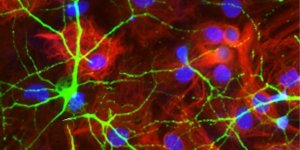
While immune cells called neutrophils are known to act as infantry in the body’s war on germs, a National Institutes of Health-funded study suggests they can act as medics as well. »
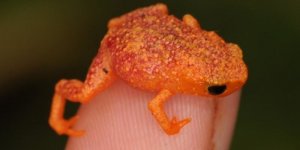
Pumpkin toadlets, found on the leaf litter of Brazil's Atlantic forest, are among the smallest frogs in the world. Scientists have now discovered that two species of these tiny orange frogs cannot hear the sound of their own calls. »

A NASA study has located the Antarctic glaciers that accelerated the fastest between 2008 and 2014 and finds that the most likely cause of their speedup is an observed influx of warm water into the bay where they're located. »

Astronomers have used ALMA to capture a strikingly beautiful view of a delicate bubble of expelled material around the exotic red star U Antliae. These observations will help astronomers to better understand how stars evolve during the later stages of their life-cycles. »

Using ethanol instead of gasoline as a car fuel can reduce emissions of ultrafine particles by a third, which benefits human health and the environment, according to a new study. »

Astronomers using ESO’s Very Large Telescope have detected titanium oxide in an exoplanet atmosphere for the first time. »

Being socially rejected can be a painful emotional experience, but being told sorry may not soften the blow, finds a new study. »
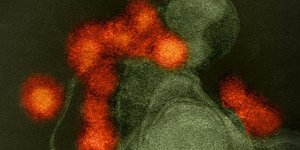
The Zika virus (ZIKV) may infect and kill a specific type of brain cancer cells while leaving normal adult brain tissue minimally affected, according to a new study. »
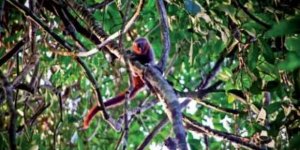
A report released this week reveals 381 new species of plants and animals found in the Amazon between 2014 and 2015. There are 216 new species of plants, 93 fishes, 32 amphibians, 19 reptiles, one bird, 20 mammals. »

The largest asteroid ever recorded has passed Earth at a distance of 145 million miles, giving scientists the opportunity to learn more about its physical characteristics. »

Researchers have used mathematical modelling to develop techniques to combat two co-infecting viruses causing maize lethal necrosis (MLN) in Kenya. »

Scientists have not been able to develop a vaccine against the sexually transmitted disease gonorrhea, despite working toward one for more than 100 years. »

Scientists developed high-tech yarns that generate electricity when they are stretched or twisted. 'Twistron' yarns have many possible applications, such as harvesting energy from the motion of ocean waves or from temperature fluctuations. »
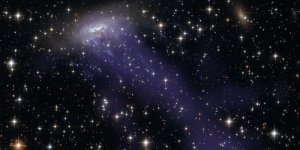
An initiative set up to find signs of intelligent life in the universe has detected a series of mysterious radio signals from a dwarf galaxy 3 billion light years away. »

Experts published a research that suggests the human propensity for contagious yawning is triggered automatically by primitive reflexes in the primary motor cortex - an area of the brain responsible for motor function. »

Recurrent outbreaks of acute encephalitis syndrome among children in India and Bangladesh could be down to exposure to agrochemicals used in lychee orchards rather than consumption of the fruit of the Asian lychee tree, according to recent research. »

Using ESO’s Very Large Telescope Interferometer astronomers have constructed the most detailed image ever of a star — the red supergiant star Antares. »

Researchers from the National Institutes of Health have identified a class of sensory neurons (nerve cells that electrically send and receive messages between the body and brain) that can be activated by stimuli as precise as the pulling of a single hair. »

Fossil remains recovered from 70 to 100 million-year-old rocks in southwestern Tanzania. »

More than 300 animal species face different degrees of threat in Bahia state. The State Environment Secretariat has published a list of 331 species of amphibians, birds, mammals, reptiles, continental invertebrates, fish, marine invertebrates, and the so-called “social interest” species—those exploited by traditional communities for sustainable use or subsistence. »

Asteroid Florence, a large near-Earth asteroid, will pass safely by Earth on Sept. 1, 2017, at a distance of about 4.4 million miles, (7.0 million kilometers, or about 18 Earth-Moon distances). »

Observations of “Jellyfish galaxies” with ESO’s Very Large Telescope have revealed a previously unknown way to fuel supermassive black holes. »

Converting forests into farms is not economically viable except in selected regions, says a global study. »

Pressure to feel upbeat can make you feel downbeat, while embracing your darker moods can actually make you feel better in the long run. »

There’s a word that everybody should learn because in a few years it may be in almost every day use. »

Scientists now have a good estimate for the age of one of the most intriguing planetary systems discovered to date -- TRAPPIST-1, a system of seven Earth-size worlds orbiting an ultra-cool dwarf star about 40 light-years away. »

Two planets that orbit around a star like our own sun could support life. »

The Perseid meteor shower peaks every year about this time as the Earth passes debris from the Swift-Tuttle comet, but this year the annual shower will come about a week before a total solar eclipse. »

An abnormal season of intense glacial melt in 2002 triggered multiple distinct changes in the physical and biological characteristics of Antarctica's McMurdo Dry Valleys over the ensuing decade. »

The genome of the Zika virus, collected from mosquitoes of the Culex family, was mapped by scientists at the Oswaldo Cruz Foundation in Pernambuco, northern Brazil. »

As the number of droughts increases globally, scientists from Oklahoma State University are working to develop predictions of how future parched conditions will affect plants, especially trees. »

Forests in south India that had become degraded due to excessive fuelwood extraction recovered after villagers living nearby switched to biogas for their cooking fuel needs, says a study. »

New Horizons scientists sort through new data gathered on the distant Kuiper Belt object (KBO) 2014 MU69, which the spacecraft will fly past on Jan. 1, 2019. That flyby will be the most distant in the history of space exploration, a billion miles beyond Pluto. »

A colossal impact with a large asteroid early in Mars' history may have ripped off a chunk of the northern hemisphere and left behind a legacy of metallic elements in the planet's interior. »

What is our universe made of, and has its composition changed over time? Scientists have new insights about these fundamental questions, thanks to an international collaboration of more than 400 scientists called the Dark Energy Survey (DES). »

Methane-eating bacteria in lake deep beneath Antarctic ice sheet may reduce greenhouse gas emissions
An interdisciplinary team of researchers has concluded that bacteria in a lake 800 meters (2,600 feet) beneath the West Antarctic Ice Sheet may digest methane, a powerful greenhouse gas, preventing its release into the atmosphere. »

Scientists have determined this year’s Gulf of Mexico “dead zone,” an area of low oxygen that can kill fish and marine life, is 8,776 square miles, an area about the size of New Jersey. It is the largest measured since dead zone mapping began there in 1985. »

A new study shows that deaths that result from extreme weather in Europe could increase 50 times by the end of the century if the effects of global warming are not curbed. »

Blue light emitted from digital devices could contribute to the high prevalence of reported sleep dysfunction. »

The rhythms of brainwaves between two people taking part in a conversation begin to match each other, concludes a new study. According to scientists, this interbrain synchrony may be a key factor in understanding language and interpersonal communication. »

Sharks defend seagrasses from overgrazing by dugongs, sea turtles, other species. »

Plants and soil in the Arctic tundra absorb and store mercury released into the atmosphere by industry and mining in the Earth's temperate regions, leading to soil mercury levels five times higher than in lower latitudes. »

Scientists working close to the line of wildfires are obtaining a new understanding of the fires' smoke plumes. The results are providing real-time information, such as vertical wind profiles, to firefighters battling blazes. »

Exposing malaria-transmitting mosquitoes to light at two-hour intervals during the night or at late daytime could inhibit their biting behaviour and reduce malaria transmission. »

A new study gives the first observational evidence that the southern Amazon rainforest triggers its own rainy season using water vapor from plant leaves. The finding helps explain why deforestation in this region is linked with reduced rainfall. »

A multinational team of scientists led by Antoine Strugarek of the University of Montreal announced the Sun may not be the cosmic oddball amongst solar-type stars some astronomers believe it to be. »

From an outside perspective, understanding a spoken language versus a signed language seems like it might involve entirely different brain processes. »

An iceberg about the size of the state of Delaware split off from Antarctica’s Larsen C ice shelf sometime between July 10 and July 12. »

A new study has revealed how inspiration from owls’ wings could allow aircraft and wind turbines to become quieter. »